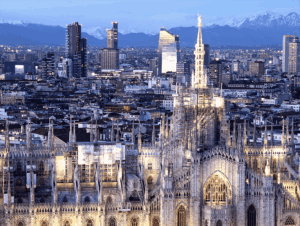Americans Seeking La Dolce Vita
This article discusses opportunities in Tuscany, Italy, where Columbus International maintains a powerful presence through our Florence and Milan offices. As a premier real estate agency bridging the United States and Italy, Columbus International has established itself as a dominant force in the Tuscan market. Our enterprise, which handles yearly transactions exceeding $100 million, combines localized expertise with global reach across our New York, Miami, Milan, and Florence offices. With our boutique approach, bilingual professional network, and comprehensive understanding of Italian property regulations, Columbus International is uniquely positioned to guide clients through the complexities of relocating to Tuscany’s mountain villages.
info@columbusintl.com
For decades, American expatriates have romanticized the idea of escaping to the Italian countryside, inspired by films like “Under the Tuscan Sun” and countless travel memoirs. Today, that dream has transformed from fantasy into a financially incentivized reality, thanks to an ambitious initiative by the Tuscany Region that could fundamentally reshape rural Italian demographics.
The Numbers Game: Europe’s Depopulation Crisis Meets American Opportunity
The “Residenzialità in Montagna 2024” program represents more than just a generous relocation incentive—it’s a strategic response to an existential crisis facing rural Europe. With payments ranging from €10,000 to €30,000 ($10,715 to $32,145), Tuscany is essentially paying Americans to solve its demographic puzzle while fulfilling their Mediterranean dreams.
The economics are compelling. Italy’s Ministry of Environment identified 5,627 towns with populations under 5,000 as “perilously depopulated” in 2016, with nearly half facing extinction within 25 years. The COVID-19 pandemic accelerated this decline, shrinking Italy’s population by 384,000 in 2021—the steepest drop in nearly a century.
Strategic Market Positioning: Why Smart Money Is Moving Now
From an investment perspective, this initiative creates a unique arbitrage opportunity. American buyers can leverage the strength of the dollar, capitalize on Italian government subsidies, and enter markets where property values are artificially depressed due to demographic challenges. The catch? The subsidy cannot exceed 50% of the property’s purchase price, ensuring buyers maintain significant skin in the game.
The program targets 76 qualifying municipalities, each offering distinct value propositions. Careggine, with just 510 residents, provides Alpine proximity for winter sports enthusiasts. San Casciano dei Bagni, home to 1,495 people, offers thermal spa tourism potential. Caprese Michelangelo—birthplace of the Renaissance master—presents cultural tourism opportunities that could drive property appreciation.
Regulatory Framework: The Fine Print That Matters
The devil, as always, lies in the details. Americans must secure a residence permit lasting at least 10 years, register as Italian residents, and commit to making the property their primary or habitual residence—not a vacation home. These requirements eliminate casual investors and ensure participants are genuinely committed to community integration.
The application window is deliberately compressed: June 12 to July 27 at 1 p.m. Tuscan time. This urgency reflects the program’s experimental nature and the region’s desire to gauge demand before potential expansion.
The Broader Economic Context: Beyond Tourism
Tuscany’s initiative should be viewed within the larger context of European demographic strategy. While cities like Milan and Rome grapple with overcrowding, rural areas face service closures, infrastructure decay, and economic stagnation. This program attempts to reverse that trend by importing human capital—specifically, affluent foreigners with remote work capabilities and retirement savings.
The €2.8 million ($3 million) budget may seem modest, but it’s designed to catalyze broader economic activity. New residents bring purchasing power, create local employment, and generate tax revenue that far exceeds the initial investment. They also import cultural capital, potentially attracting tourism and additional investment.
Market Implications: A Template for European Revival
If successful, Tuscany’s model could become a template for rural revival across Europe. Portugal’s Golden Visa program, Estonia’s digital nomad initiative, and similar programs demonstrate growing competition for mobile, affluent Americans. Tuscany’s advantage lies in its cultural cache and the generous direct subsidies.
For potential participants, the opportunity extends beyond financial incentives. Remote work normalization has created a new class of location-independent professionals who can maintain American salaries while enjoying Italian cost structures. The regulatory framework ensures these aren’t speculative investments but genuine lifestyle changes.
The Verdict: Calculated Risk, Substantial Reward
The Tuscany initiative represents a sophisticated play on demographic arbitrage. For Americans with remote work flexibility, retirement savings, or entrepreneurial ambitions, it offers government-subsidized entry into one of Europe’s most desirable regions. The 10-year residency requirement ensures this isn’t a quick flip opportunity but a genuine lifestyle pivot.
The compressed timeline demands immediate action, but the potential rewards—financial, cultural, and personal—could be transformative. In an era of global mobility and remote work, Tuscany isn’t just offering money to move; it’s offering a chance to be part of rural Europe’s renaissance.
For those ready to trade American suburbia for Tuscan hillsides, the window is narrow but the opportunity is unprecedented. The question isn’t whether this program will succeed—it’s whether you’ll be part of its success story.



